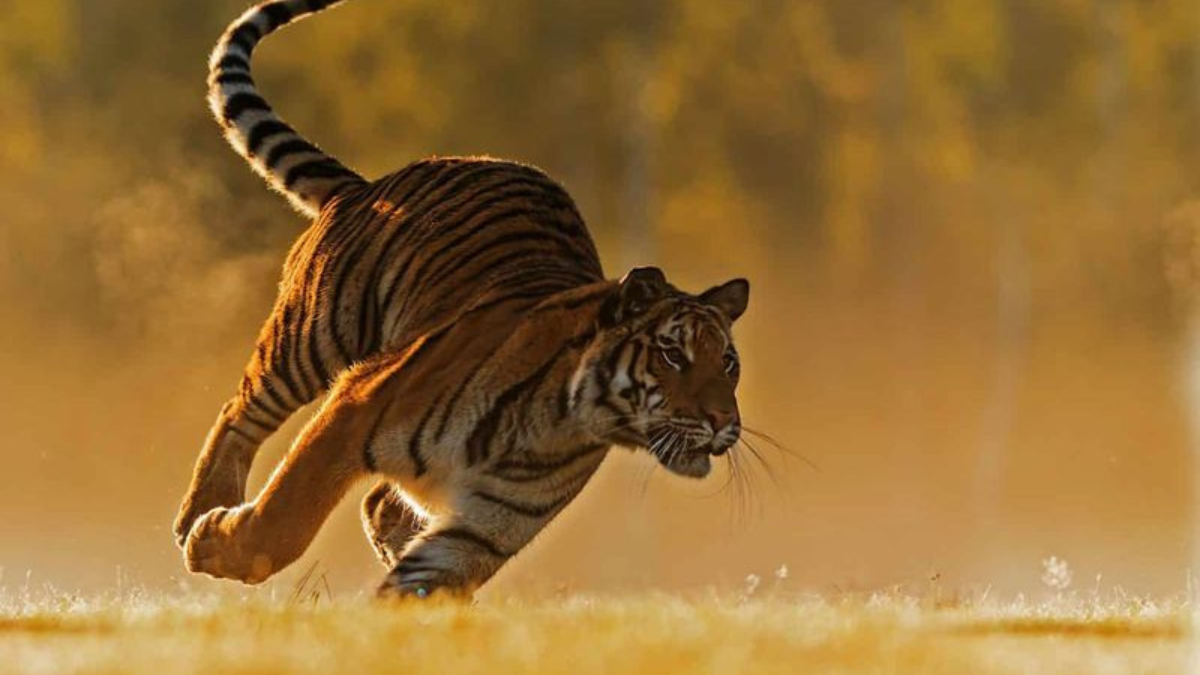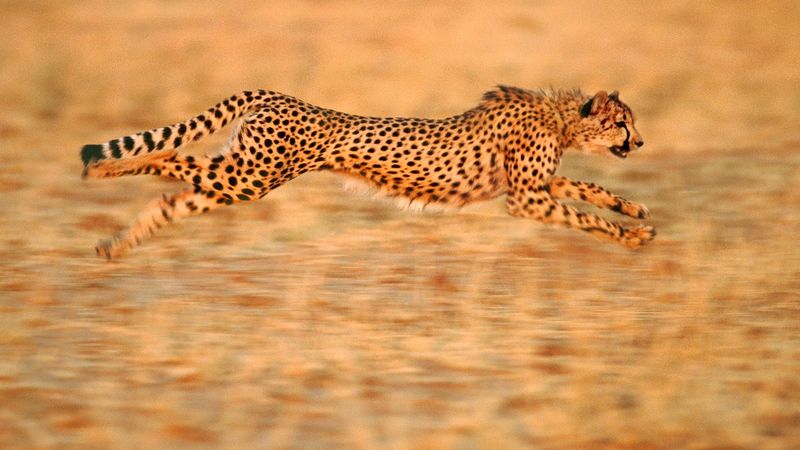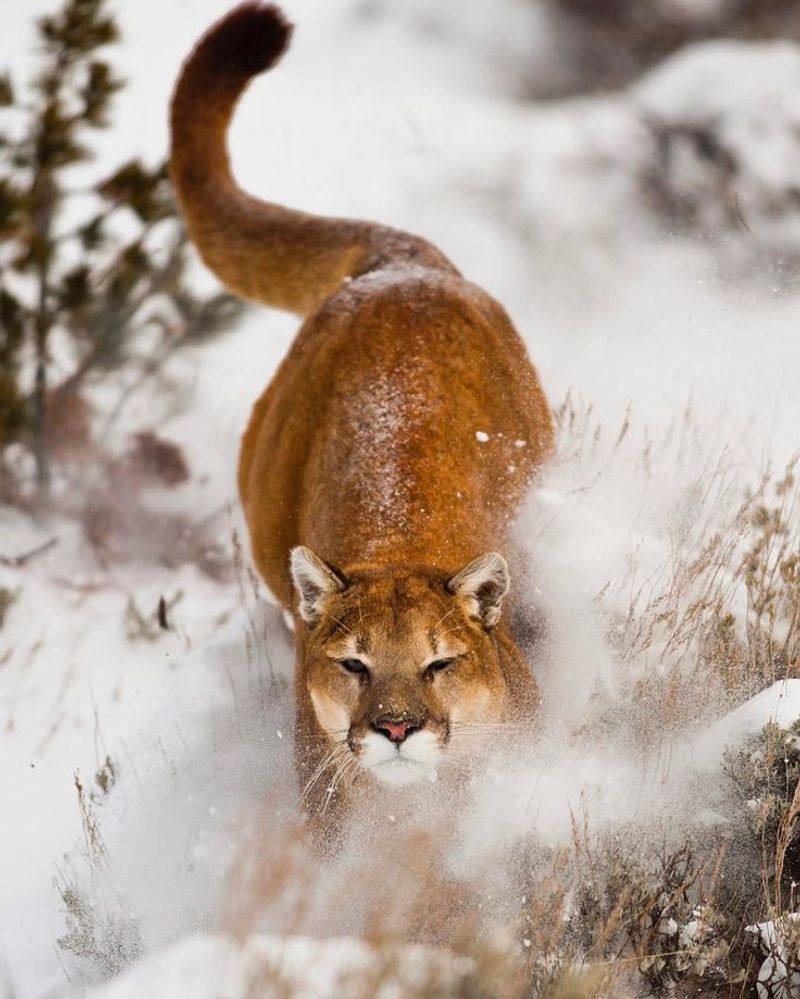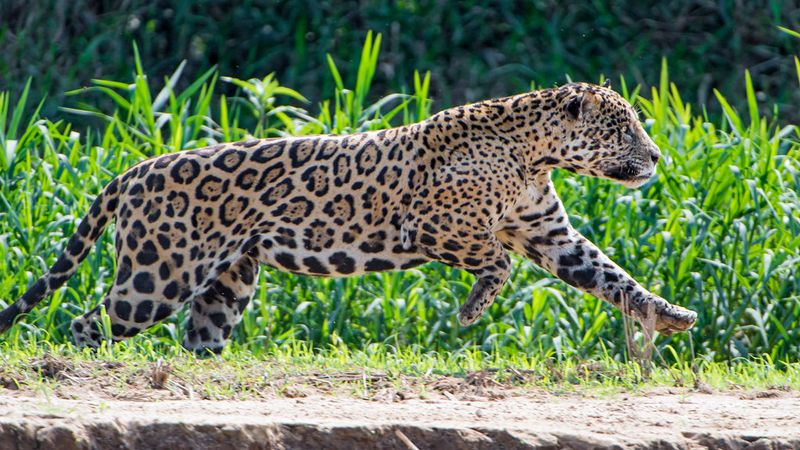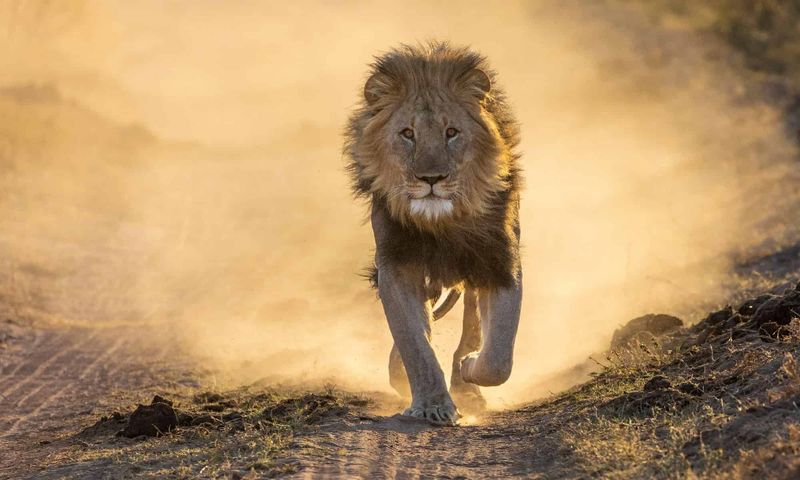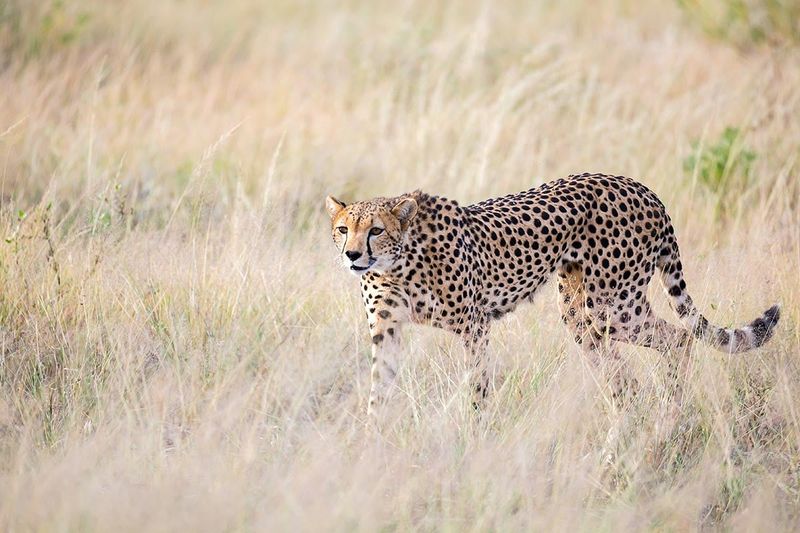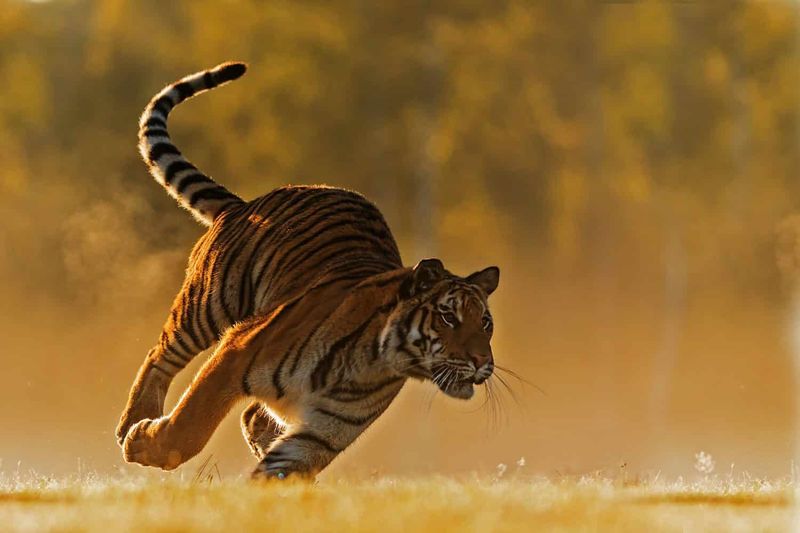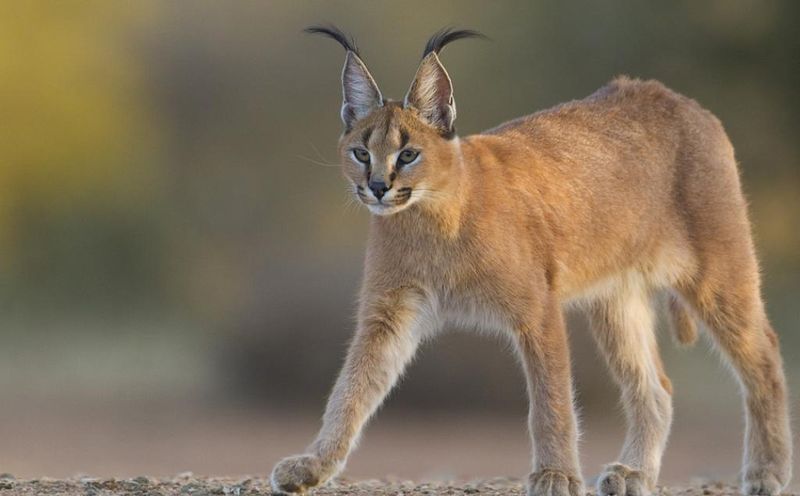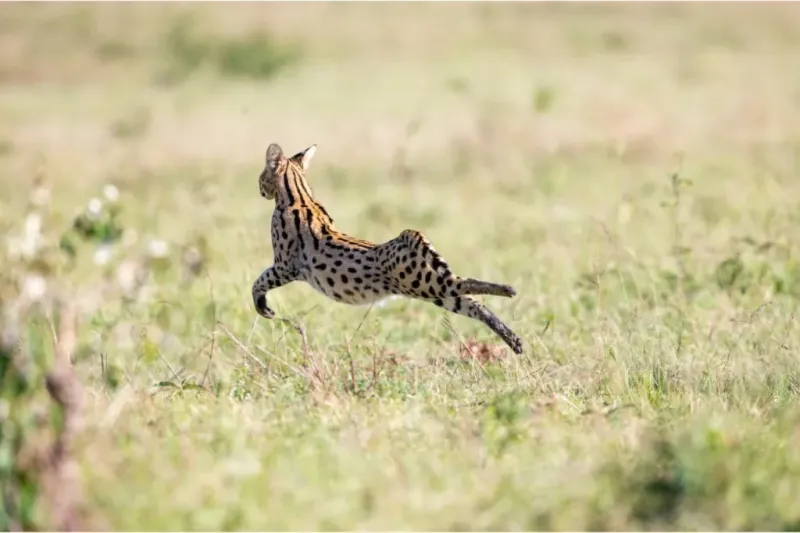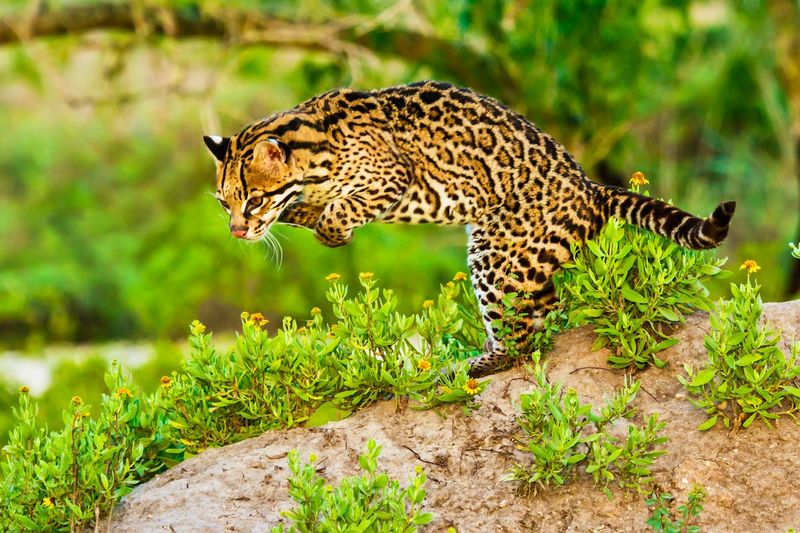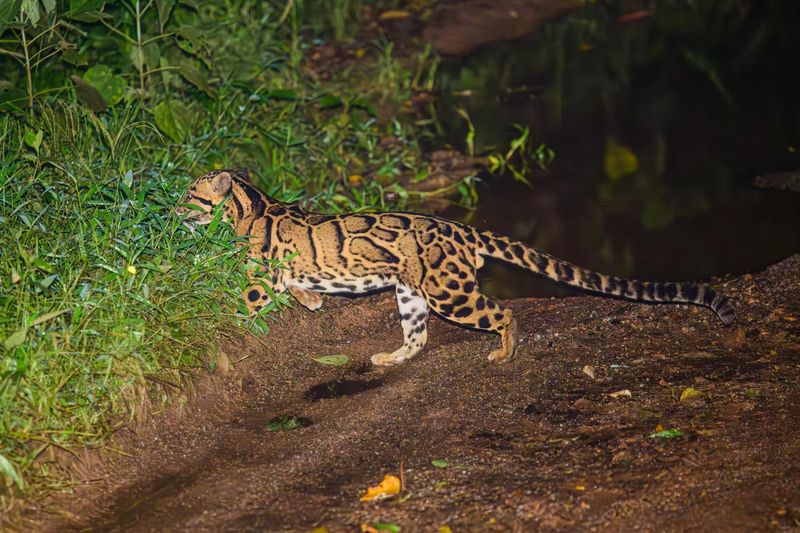📖 Table of Content:
Big cats possess a remarkable combination of strength, speed, and precision. Their bodies are built for the hunt, with powerful muscles and sleek frames that reduce resistance. Every movement is a calculated effort to close the gap between predator and prey.
Speed plays a crucial role in their survival and dominance in the wild. Whether sprinting across open plains or leaping through dense underbrush, these cats rely on quick bursts to capture their targets. Evolution has fine-tuned their anatomy to favor rapid acceleration and agility.
From the cheetah’s record-breaking sprints to the caracal’s acrobatic leaps, each species brings its own version of speed to the table. These adaptations reflect a deep connection between form and function. In the world of predators, velocity often means the difference between a full belly and a missed opportunity.
1. Cheetah
Cheetahs reign supreme as the world’s fastest land animals, reaching speeds up to 75 mph (120 km/h) in just three seconds. Their specialized bodies feature lightweight frames, long legs, and flexible spines that act like springs during high-speed chases. Special adaptations include enlarged hearts, lungs, and nostrils that maximize oxygen intake during sprints.
Unlike other big cats, cheetahs have semi-retractable claws that work like cleats for traction. These speed demons can maintain their top velocity for only about 20-30 seconds before overheating. Their distinctive tear marks help reduce glare from the sun during daytime hunting, when their extraordinary speed gives them a crucial advantage over prey.
2. Puma
Also called mountain lions or cougars, pumas can sprint at impressive speeds of 50 mph (80 km/h). Their powerful hind legs generate explosive acceleration, helping them ambush prey in diverse habitats from mountains to deserts. These adaptable cats possess incredible jumping ability, leaping up to 18 feet vertically and 40 feet horizontally.
Their muscular bodies and flexible spines enable quick direction changes while chasing prey through rugged terrain. Pumas maintain efficient oxygen use during high-speed pursuits thanks to their large heart-to-body ratio. Unlike many big cats, they don’t roar but communicate through purrs, whistles, and screams. Their remarkable speed helps compensate for their solitary hunting style.
3. Jaguar
Capable of sprinting up to 50 mph (80 km/h), jaguars are the fastest large felines native to the Americas. Their compact, powerful frame supports not just speed but also exceptional strength, including the greatest bite force among big cats. This speed is used for ambushing rather than pursuit, with many attacks initiated from water, a terrain in which jaguars excel.
Their compact bodies allow for exceptional maneuverability in dense rainforests. Unlike most cats, jaguars kill with a unique skull-piercing bite rather than a throat hold. This efficient hunting method, paired with their speed, makes them apex predators. Their distinctive rosette spots provide perfect camouflage for their quick-strike hunting style.
4. Lion
Despite their heavy frames, lions can sprint up to 50 mph (80 km/h), merging brute strength with impressive speed. Their powerful shoulders and forelimbs help launch them forward during the final moments of a hunt. What sets lions apart is their teamwork—lionesses often work together, with some chasing prey directly into the path of waiting pride members.
This teamwork maximizes their speed advantage against faster prey like zebras and wildebeests. A lion’s speed burst typically lasts under a minute – they’re built for power, not endurance. Males, despite carrying up to 50% more weight than females due to their manes and larger size, can still achieve remarkable velocity when motivated by territorial defense or hunting opportunities.
5. Leopard
Leopards dash at speeds up to 36 mph (58 km/h), combining velocity with extraordinary climbing ability. Their speed serves a unique purpose – not just for chasing prey but for quickly dragging kills up trees to avoid competition from other predators. These versatile hunters have incredibly strong neck and shoulder muscles that enable them to carry prey weighing up to three times their own body weight while climbing.
Their speed comes from a perfect balance of strength and agility. Leopards hunt primarily at dawn and dusk, using short bursts of speed for ambush attacks. Their adaptable hunting style works across diverse habitats from rainforests to deserts. Unlike cheetahs, leopards don’t rely on sustained speed but instead on explosive acceleration and the element of surprise.
6. Tiger
With stripes flashing through the undergrowth, tigers can thunder forward at 40 mph (65 km/h). Their legs store energy like tensioned springs, primed for a fierce, final charge. Unlike their lighter cousins, tigers don’t chase—they strike with silence and sudden speed.
Tigers rely on stealth followed by a short, powerful burst rather than long chases. Their broad paws spread wide during sprints, providing traction like natural snow shoes in varied terrain. A tiger’s speed becomes even more impressive considering adult males can weigh over 600 pounds. Their unique hunting style combines patience (sometimes stalking for hours) with a lightning-fast final charge. This combination of stealth, power, and speed makes tigers among the most successful ambush predators.
7. Caracal
Graceful and swift, caracals soar across the ground at 50 mph (80 km/h). Their slender frames and long legs create a stride that defies their size. But it’s their skyward leap—up to 10 feet high—that leaves even birds with little chance of escape.
This combination of speed and jumping prowess makes them especially effective hunters in open grasslands. Their distinctive tufted ears act as radar dishes, helping pinpoint prey movement during high-speed pursuits. Though smaller than many big cats, weighing 25-40 pounds, caracals use their speed to hunt prey larger than themselves. Their name comes from the Turkish word ‘karakulak,’ meaning ‘black ear.’
8. Serval
Racing across the grasslands at 50 mph (80 km/h), the serval blends speed and agility like few others. Its long legs, the most elongated relative to body size of any cat, power its every move. With a sudden sprint or a vertical leap, it brings down prey with surgical precision—no chase required.
Servals perform spectacular vertical leaps up to 10 feet high, diving down on prey from above after pinpointing their location with sensitive ears. Their elongated neck and legs create a unique silhouette while running. Native to African grasslands, servals have adapted for hunting in tall grass where visibility is limited. Their remarkable speed helps them cover ground quickly between hunting areas. Despite weighing only 20-40 pounds, their specialized hunting technique and velocity make them highly successful predators.
9. Ocelot
Gliding through the forest at 38 mph (61 km/h), ocelots move like shadows among the trees. Their speed is adapted for quick twists and silent leaps rather than open sprints. Paired with their climbing grace and comfort in water, they are jungle athletes in every sense.
Unlike many fast cats that hunt in open areas, ocelots navigate complex rainforest environments at high speed, dodging obstacles while pursuing prey. Their large eyes collect maximum light for night hunting, when they use short bursts of speed for ambush attacks. Ocelots possess twice the night vision capability of humans. Their speed helps compensate for their solitary hunting style, allowing them to cover large territories efficiently in search of prey.
10. Clouded Leopard
Clouded leopards dash through Asian forests at speeds up to 40 mph (64 km/h), blending velocity with unmatched climbing skills. Their flexible ankle joints can rotate 180 degrees, allowing them to descend trees headfirst and maneuver at speed through complex canopy environments.
These mysterious cats possess the longest canine teeth relative to skull size of any modern cat, earning them comparisons to prehistoric saber-toothed cats. Their speed is complemented by exceptional balance from their long tails, which nearly match their body length. Clouded leopards combine their speed with remarkable stealth, moving silently through forests despite their size. Their distinctive cloud-like markings provide perfect camouflage during high-speed forest pursuits. As primarily arboreal hunters, they use their speed both on the ground and through the treetops.
